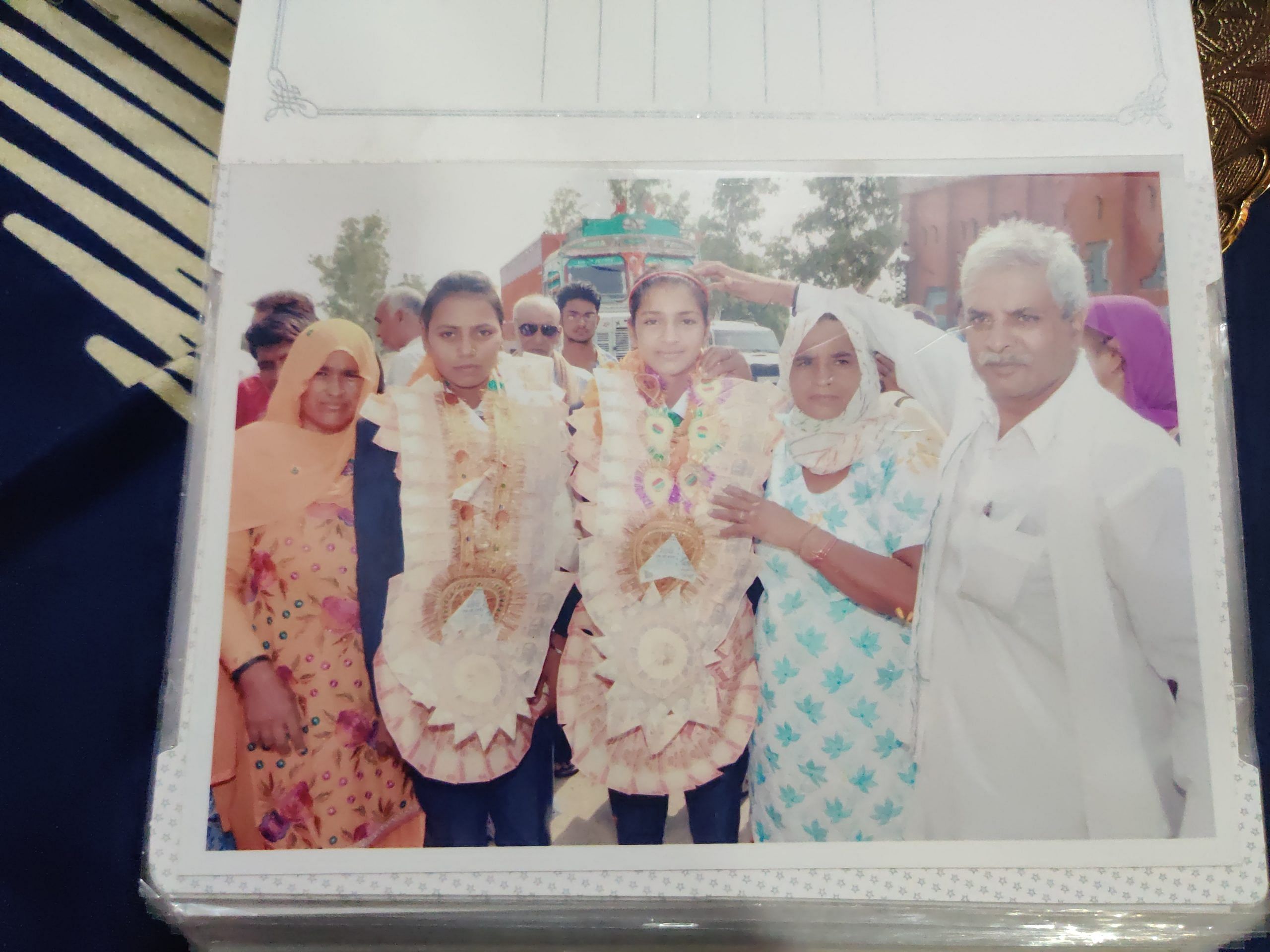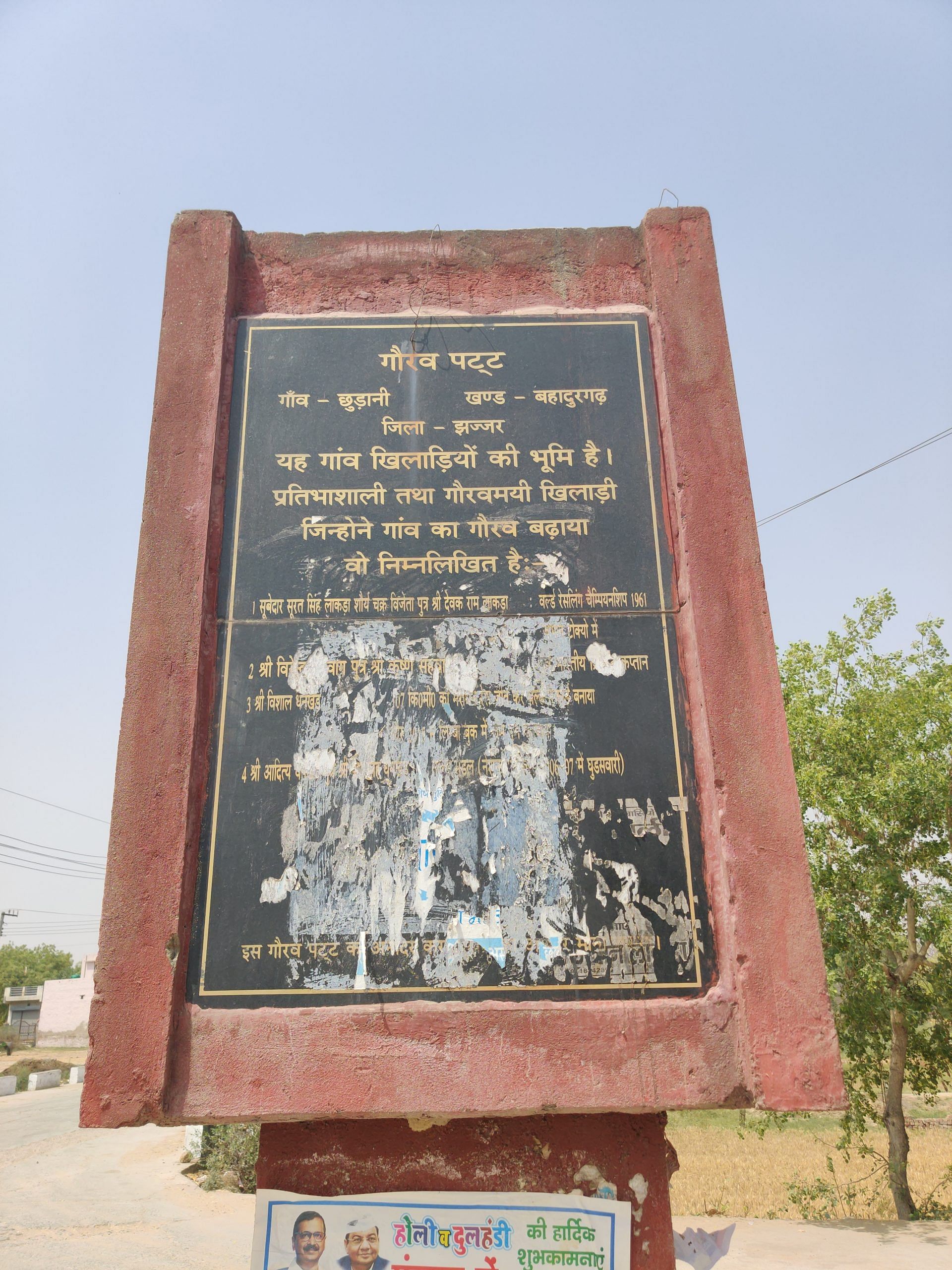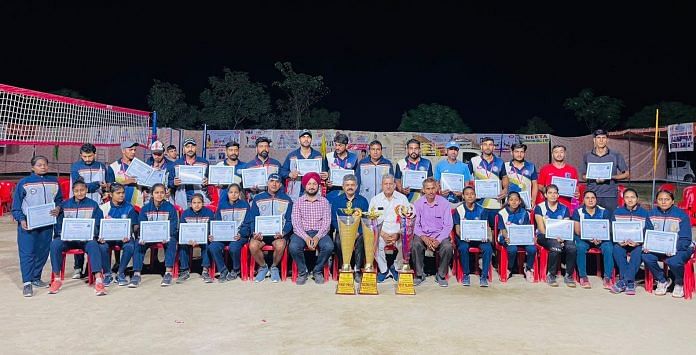Jhajjar: On 27 March, a team of 12 women from Haryana won a silver medal in the National Women Shooting Ball competition held in Abohar, Punjab. But for most of these women, the path to the tournament was tough and one among them was 20-year-old Himanshi, who hails from the Khedi Asra village of Haryana’s Jhajjar district. Daughter of a DTC (Delhi Transport Corporation) driver, Himanshi was unsure if she would even be able to participate in the national-level tournament after her family hit a rough patch. However, when the father was unable to pay the bills, sports enthusiasts, leaders and the village community stepped in to pave the way for the tournament for Himanshi.
While initially supportive of his daughter, Dharmendra was forced to ask her to quit for financial reasons. “He said: ‘Padhai karo, itna kharch nahi utha sakte (Study now. We cannot afford [training for shooting ball])’,” recalled Himanshi. A family of six, sports has been an important part of the Chhikaras. Their eldest daughter Hiteshi had won medals in national and international-level shooting ball tournaments from 2002-2009, before settling down in Mumbai with a job in the Indian Railways.
But 13 years later, supporting his youngest daughter’s sporting passion proved to be more difficult than he imagined. Dharmendra recalled the day he discovered his eldest daughter Hiteshi’s talent in shooting ball: “Kisi ne mujhe bataya ki aapki beti toh bahut achha khelti hai toh main uske school gaya aur peeche se chup chaap isko khelte dekha (After someone told me about her [Hiteshi] talent, I went to her school and observed her game).” And the apple did not fall from the tree, he quipped, noting that Himanshi took to shooting ball like fish to water.
Himanshi’s story is just one among the 12 girls who played for the Haryana shooting ball team. Of these 12, seven girls belong to the Jhajjar district. Besides Himanshi, Sudha also hails from the Khedi Asra village. Pooja and Kajal belong to the adjacent Chhudani village. Kritika, Deepika, Anshu are from Dulheda village. While Kajal’s father works in Delhi Police, the remaining girls’ fathers are daily wage workers. And several of them could not afford the costs of participating in the tournament.
“We were not doing well financially that’s why we had asked Himanshi to stop playing but then they came forward to help,” said Dharmendra. The ‘they’ here refers to the girls’ coaches at the time — Balwan, Sandeep Sangwan and Ramesh Hooda — former education minister of Haryana and MLA from Jhajjar Geeta Bhukkal, Jai Prakash Kadian, General Secretary of Shooting Ball Federation, Haryana as well as villagers from the Khedi Asra village.

Also read: ‘If a girl is alone, she’s not so believable’: Bihar’s mahila thanas are no place for women
A village and the social support
According to Kadian, the team received aid from several people — leaders and villagers. “Net, ball, kit — jo bhi zaruratein thi khiladiyon ki hum sabne milke madad ki kyunki jab itna achha khel rahi hai toh support toh milna hi chahiye (We helped the players with whatever help was needed. After all, if they are playing so well then we must support them),” said Kadian. The federation also helped the girls in securing scholarships at schools and colleges. Each time the girls of Khedi Asra won a tournament, the villagers welcomed them back with open arms and garlands. Especially the women were beaming with pride while speaking about the achievements of the young girls of their village.
Kadian especially made note of the support offered by Congress leader Geeta Bhukkal, the MLA from Jhajjar. He also noted that the earlier Congress-ruled state government used to help athletes in need under former chief minister Bhupinder Singh Hooda. When asked if there is enough support from the incumbent BJP government in the state, Kadian said, “Khiladi ki koi sarkaar nahi hoti (An athlete has no government)”.
However, he highlighted the need for accreditation for shooting ball at the state level. He added that they have submitted a plea with the Haryana Sports Minister Sandeep Singh, a two-time hockey Olympian, for the same.

Also read: ‘Anti-sanskaar and anti-sharam’: How sex wellness brands are redefining pleasure in India
Shooting ball — the less costly volleyball
Similar to volleyball, shooting ball is an indigenous sport of India. It is also comparatively less costly than its more famous counterpart. According to Himanshi, the balls used for the two games are quite different. The ball used in shooting ball is made of soft leather and has a bladder inside. It weighs 320 gm for the men’s category and 270 gm for the women’s category. For service, the player resorts to under-hand in shooting ball while in volleyball, one sees a smash service.
It is believed to be a sport that belongs to the pre-Independence era. Initially, it was played with a rope, which was soon replaced by the net and the leather ball replaced the cloth ball, according to Sports Authority of India’s (SAI) Manjushree Dayanand.
After the Shooting Ball Federation of India was established, the first national championship was held in 1976 at Ambedkar Stadium, Delhi. In 1985, the Shooting Ball Federation received recognition from the Ministry of Youth Affairs and Sports, Government of India. Several tournaments are organised nationwide under the Ek Bharat Shreshtha Bharat initiative to promote indigenous sports of India. The central government also incorporated shooting ball among 20 new disciplines eligible for central government jobs under the sports quota in 2020.
It is still finding its place in the larger national space, especially women teams. According to Nirmala Devi, a villager from Khedi Asra and Himanshi’s aunt, when her elder sister Hiteshi began playing the sport, there was no female team for the game. Things are rapidly changing, however. Several families are in fact encouraging their daughters to play. Kajal, a 17-year-old student in Class 12, from Chhudani village wishes to continue the sport, even after school. And her father Dashrath, who works for the Delhi Police, is extremely supportive of her sport.
“We never asked Kajal to quit. We’d rather want her to play for as long as she can,” said Dashrath.
Shooting game — a distant cousin of volleyball (visibly) — is an indigenous sport of India. In comparison, the sport is also cheaper than its more famous counterpart.
Although the two sports are similar in nature, little differences make all the difference. According to Himanshi, the balls used for the two games are quite different. The ball used in shooting ball is of soft leather with a bladder inside. It weighs 320 gm for the men’s category and 270 gm for the women’s category. For service, the player resorts to under-hand service in shooting ball while in volleyball, one sees a smash service.



